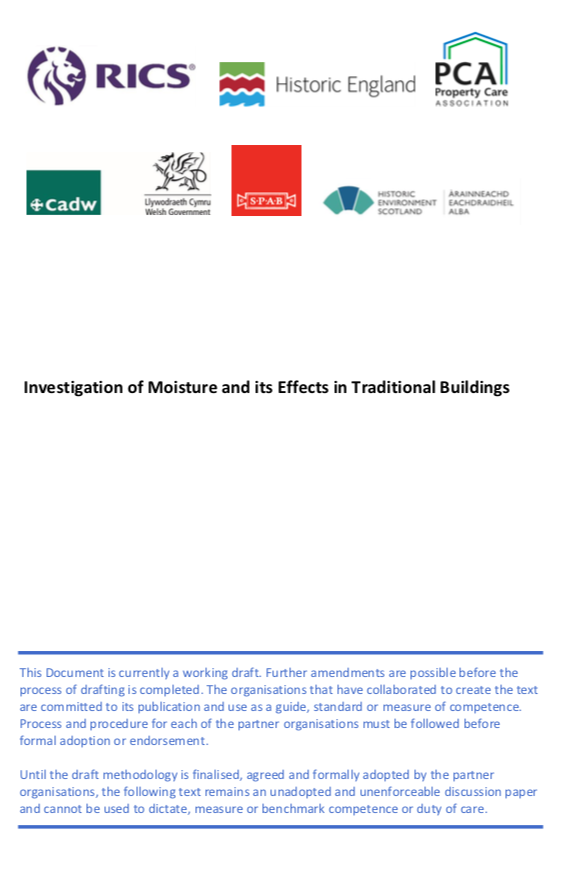RICS Joint Damp Methodology Investigation of moisture and it’s effects in traditional buildings
By: admin | Posted on: November 22, 2021
Damp investigations and advice will massively vary with what a client will get. This is simply because some damp investigations will not be thorough enough, and will be non invasive / non intrusive. Also it isn’t unusual to get different opinions on how to fix the issues. This is where it can get difficult especially if no data has been produced by taking plaster samples, as per BRE DIGEST 245 https://www.completepreservation.co.uk/what-is-bre-digest-245/ This then results on diagnosis confirmed just by an opinion, not by data…..If you need a damp survey that is based on opening up, data by sampling, to include drains surveys etc, please contact the office on enquiries@completepreservation.co.uk

Whilst this is still the draft methodology the new methodology will be published very shortly.
Do you know the questions you need to ask prior to instructing a damp specialist surveyor? This video explains and tells you the very basics that includes the facts from the British Standards
Bridging of the damp proof course, or bridging of the dpc, is such a common cause of rising damp to internal walls, and also external walls. BS 6576, and BRE DIGEST 245 is the standards that all damp surveyors should be following. As per the video you need to ask your damp surveyor some vital questions. If you don’t ask these questions you might fall into the trap, and perhaps your root cause of rising damp will not be diagnosed correctly, that could result in expensive treatment and repairs. By getting the correct survey initially, it will add value long term.
1. First of all you need to make sure your damp surveyor is suitably experienced, and qualified.
2. You must ask for an invasive / intrusive survey if it’s anything to do with damp at the base of the wall, and possibly bridging of the dpc, like rising damp. Non invasive surveys will simply not be good enough.
3. An averagely competent surveyor will follow the guidance in BS 6576, as per what I have spoke about in the video.
4. They will also need to follow the methodology in BRE DIGEST 245. This is basically the only quantitative methodology to confirm rising damp, by using a carbide meter / speedy meter or better still gravimetrics.
5. Make sure all of the below are eliminated as a potential cause by your damp surveyor, as per guidance in BS 6576.
1. Condensation
2. Lateral penetration associated with ground and floor level
3. Leaks from roofs gutters, and downpipes
4. Faulty drains
5. Internal plumbing leaks
6. Water penetration through external walls
7. Water penetration around windows and doors
8. Mortar droppings in the cavity
9. History of flooding
I do find that if a physical damp proof course is present and there is damp on internal walls, there is a high possibility there could be drain issues, or a possible leak.
